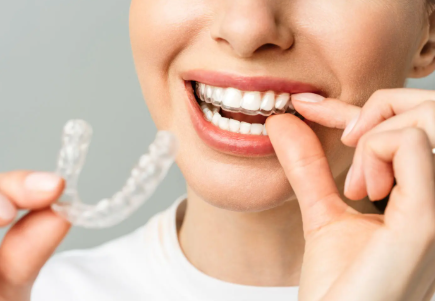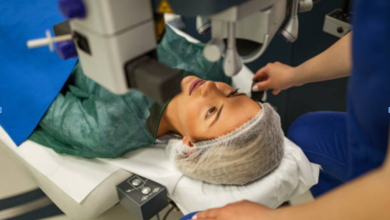Smile Comeback: Restoring Teeth After Sports Injuries

Sports bring excitement, competition, and a drive to push physical limits—but they can also bring dental mishaps. Whether it’s a stray elbow on the basketball court, a fast pitch in baseball, or an unexpected collision during soccer, sports-related dental injuries are a common occurrence. For athletes, both professional and recreational, a damaged smile can be more than just a cosmetic issue—it can impact confidence, speech, chewing ability, and long-term oral health.
A chipped front tooth, a cracked molar, or even a knocked-out tooth can leave someone feeling self-conscious and anxious about the recovery process. Fortunately, advancements in dental restoration now make it possible for patients to regain not only the function of their teeth but also the natural beauty of their smiles.
Common Sports-Related Dental Injuries
The type of dental injury sustained in sports depends on the activity, protective gear worn, and impact severity. Some of the most common include:
- Chipped or fractured teeth – Often caused by direct impact, these range from minor enamel chips to deeper fractures involving dentin or pulp.
- Tooth displacement – Teeth can be loosened or shifted in their sockets, affecting bite alignment and stability.
- Avulsion (knocked-out tooth) – Requires immediate care, as replantation is often time-sensitive.
- Cracked dental restorations – Existing fillings, crowns, or veneers may break under high-force impact.
- Soft tissue injuries – Cuts and bruises to gums, lips, and tongue often accompany tooth trauma.
While protective mouthguards reduce the risk of these injuries, they cannot always prevent them entirely. This is why swift, professional treatment is critical for preserving both oral health and aesthetics.
Restorative Dentistry: The Game Changer
When a sports injury occurs, time is crucial. Modern restorative dentistry offers treatments that can return teeth to their original form, function, and appearance—often in ways that are virtually undetectable. With a subtle mastery of restorative dentistry, dentists combine science, skill, and artistry to make the repaired tooth blend seamlessly with the rest of the smile.
Depending on the severity of the injury, treatment options may include:
- Dental bonding – Ideal for small chips and cracks, using tooth-colored resin for a quick and natural-looking fix.
- Porcelain veneers – Thin shells that cover the front surface of the tooth, perfect for restoring symmetry and color after damage.
- Dental crowns – Protective caps that restore the shape, strength, and durability of fractured or heavily restored teeth.
- Root canal therapy – Necessary when the injury damages the tooth pulp, ensuring pain relief and infection prevention.
- Dental implants – A permanent solution for missing teeth, providing stability and long-term function.
- Inlays and onlays – Used for moderate damage to molars, restoring bite force without compromising surrounding structure.
In some cases, multiple treatments are combined to achieve the best outcome. The key is personalisation—every injury is unique, and so is every smile.
The Role of Aesthetics in Recovery
Restoring a sports-injured tooth is not only about fixing the damage—it’s about bringing back confidence. Athletes, especially those in the public eye, may feel pressured to maintain a flawless appearance. Even a minor chip can feel like a major setback when it affects self-image.
Modern dentistry has evolved to prioritise aesthetic integration. Shade matching, tooth contouring, and advanced ceramics allow for restorations that are indistinguishable from natural teeth. For patients, this means that the repaired tooth doesn’t just work well—it looks like it was never injured in the first place.
Technology’s Winning Edge
Advances in dental technology have transformed the restoration process. Digital imaging, 3D scanning, and computer-aided design make it possible to plan restorations with incredible accuracy. This precision ensures that the repaired tooth fits harmoniously with surrounding teeth in terms of size, shape, and color.
Digital Smile Design (DSD) is one such innovation that allows dentists to visualise the final result before treatment even begins. For injured athletes, this preview offers reassurance and a clear roadmap to recovery.
Laser dentistry also plays a role, offering minimally invasive options for soft tissue repair and enhancing healing times. Combined with modern materials like high-strength ceramics and composite resins, today’s dental restorations are more durable and lifelike than ever before.
Read Also: UL TPU Cable: A High-Performance Wiring Solution for Modern Technology
Prevention and Preparedness
While restorative dentistry is more advanced than ever, prevention remains the best defense. Custom-fitted mouthguards, regular dental check-ups, and immediate care after any injury are essential for reducing long-term complications.
Athletes—whether competitive or casual—should also be aware of the signs of dental trauma that might not be immediately visible. Lingering tooth sensitivity, bite changes, or gum swelling could signal underlying damage that needs prompt attention.
In the end, recovering from a sports-related dental injury is about more than just repairing teeth—it’s about restoring the spirit and confidence of the individual. With today’s advanced techniques, where precision meets beauty in restorative dentistry, patients can expect outcomes that look and feel natural, allowing them to get back in the game with a smile that’s stronger than ever.




